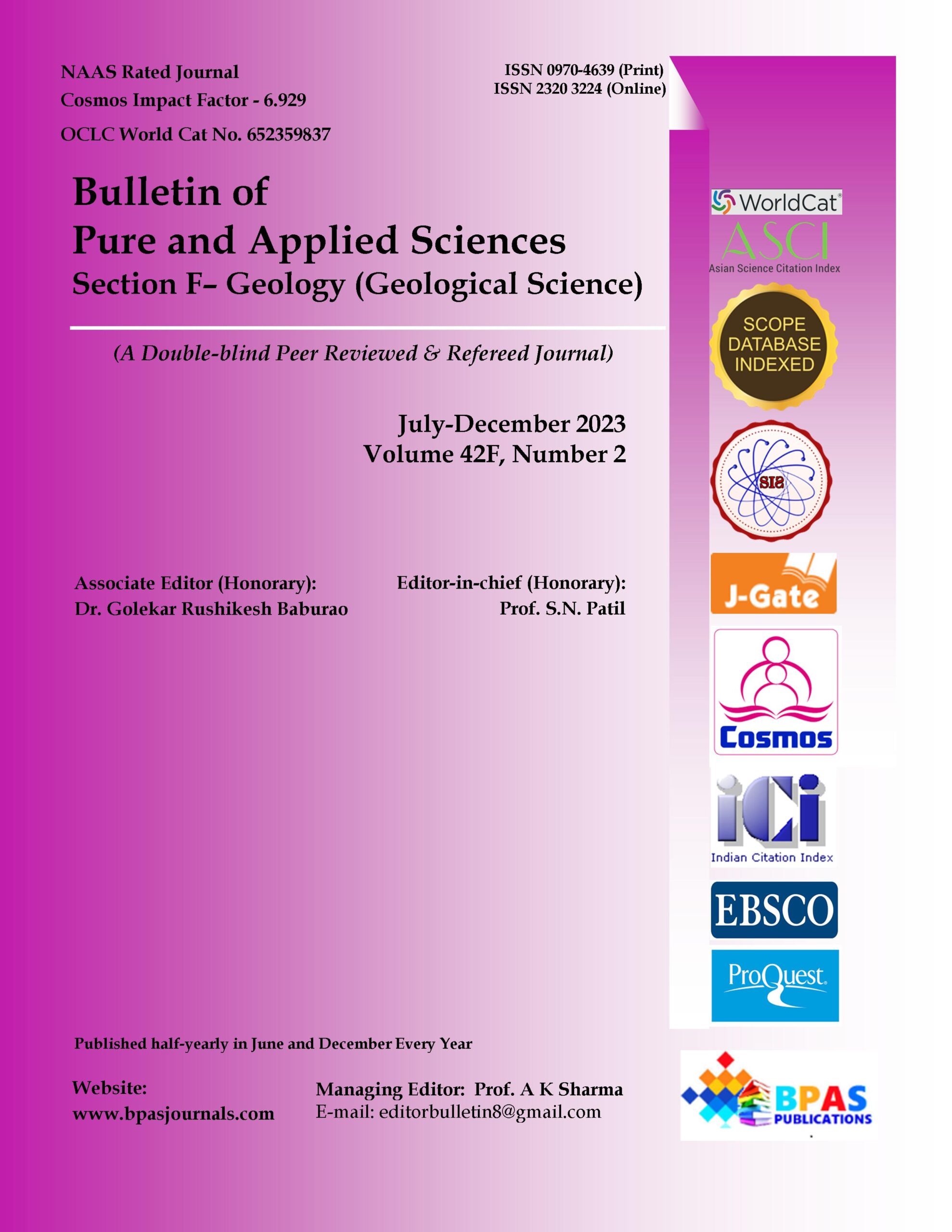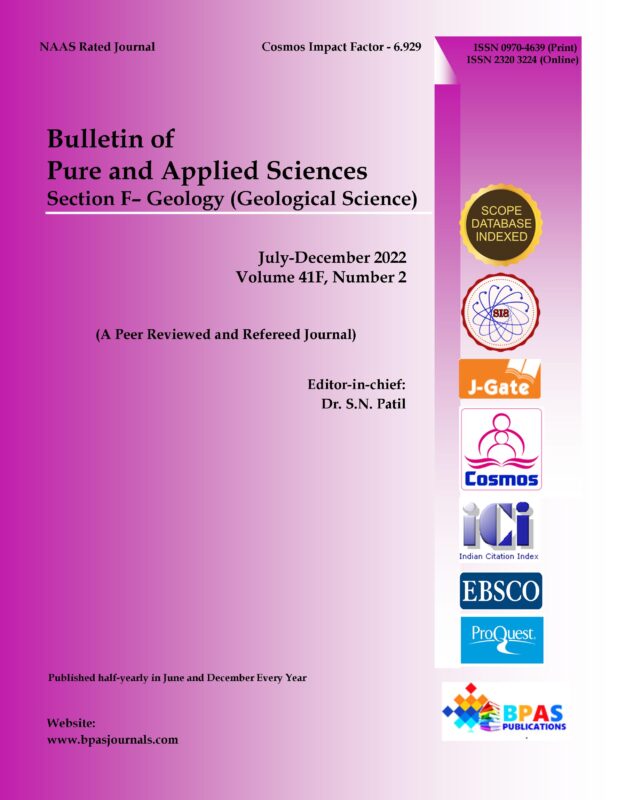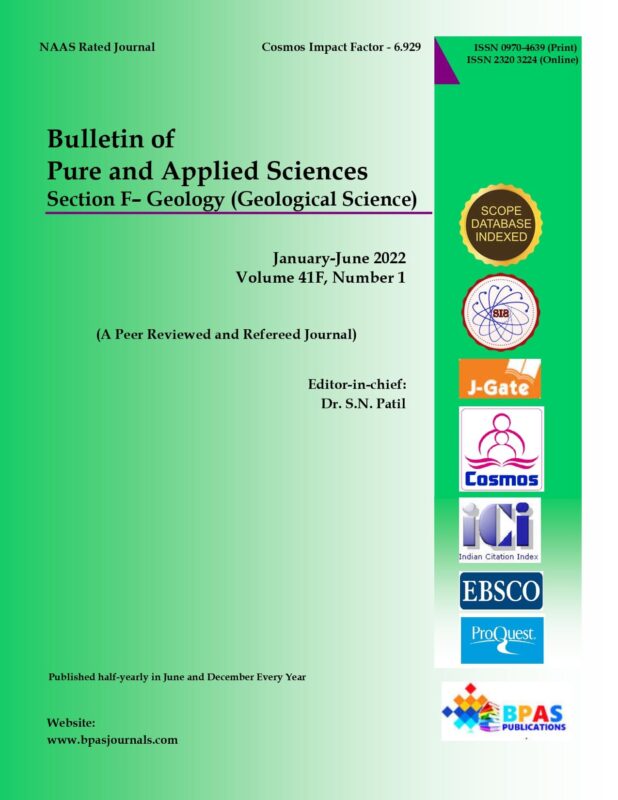Exploring Greenockite: Occurrences and Geological Setting
9.38$
Exploring Greenockite: Occurrences and Geological Setting
1Swapnil N. Deshmukh* and 2Abhay M. Varade
| Bulletin of Pure and Applied Sciences
Geology (Geological Science), Vol.42F, No.2, July-December 2023: P.234-245 |
| Original Research Article |
Categories: 42F(2), JUL-DEC 2023, BPAS-Geology
Description
Description
Exploring Greenockite: Occurrences and Geological Setting
1Swapnil N. Deshmukh* and 2Abhay M. Varade
| Author’s Affiliations:
1Post-Graduate Department of Geology, R.T.M., Nagpur University, Rao Bahadur D. Laxminarayan Campus, Law College Square, Amravati Road, Nagpur, Maharashtra 440001, India E-mail: swapnildeshmukh045@gmail.com 2Associate Professor, Post-Graduate Department of Geology R.T.M. Nagpur University, Rao Bahadur D. Laxminarayan Campus, Law College Square, Amravati Road, Nagpur, Maharashtra 440001, India E-mail: varade2010@gmail.com
|
| *Corresponding Author: Mr. Swapnil N. Deshmukh, Research Scholar,Post-Graduate Department of Geology R.T.M. Nagpur University,Rao Bahadur D. Laxminarayan Campus, Law College Square, Amravati Road, Nagpur, Maharashtra 440001, India
E-mail: swapnildeshmukh045@gmail.com
|
| (Received on 18.07.2023, Revised on 19.09.2023, Approved on 06.10.2023, Accepted on 15.11.2023, Published on 15.12.2023)
|
Abstract
Abstract:
Greenockite, mineral containing cadmium, is of significant scientific interest owing to its remarkable properties and potential applications in the field of science. It commonly forms in hydrothermal ore deposits as a secondary mineral due to complex cadmium-sulfur interactions influenced by temperature. Typically, it replaces zinc minerals like sphalerite, depending on the abundance of cadmium and zinc in hydrothermal fluids. Solid solubility in the ZnS-CdS system occurs at high temperatures, with immiscibility observed under specific conditions. Greenockite forms at relatively low temperatures (100°C to 200°C) and is influenced by factors such as oxygen fugacity, hydrogen sulfide activity, and chloride ion content. Its hexagonal zinc blende structure results in diverse crystal forms, including rods, wires, and whiskers, often adorned with bismuth drops. Experimental studies have identified factors affecting its formation, such as solid solubility, precipitation mechanisms, pH levels, and fluid composition. Its vibrant coloration, attributed to cadmium concentration, varies from pale yellow to deep orange-red. Geologically, it is present in diverse settings, including metamorphosed zinc oxide mineralization, granites, fumaroles, pegmatites, and sediment-hosted Pb-Zn deposits, with a unique occurrence in gabbroic rock at the Babbitt deposit. In India, Greenockite has been identified in the Bagada orogenic gold prospect, situated within the Paleoproterozoic Mahakoshal belt, Central Indian Tectonic Zone (CITZ). Additionally, it is found in hydrothermal deposits of Pb-Zn mines of Zawar. It is exclusively encountered within specific geological settings, primarily as a secondary product. This paper provides a comprehensive exploration of its geological occurrences, distribution, associations, and exceptions.
Keywords: Cadmium, Greenockite, Geochemistry, Cadmium-Sulfur Interactions, Geological Settings



